The following list highlights some of the best places to visiting in Syria. So if you are in Syria, I recommend visiting the following:
- Ancient Damascus, Damascus, Syria
- Al Azem Palace, Damascus, Syria
- Krak des Chevaliers, Al-Husn, Syria
- Umayyad Mosque, Damascus, Syria
- Al-Hamidiyah Souq, Damascus, Syria
- The Aleppo Citadel, Aleppo, Syria
- Palmyra, Homs Governorate, Syria
1. Ancient Damascus, Damascus
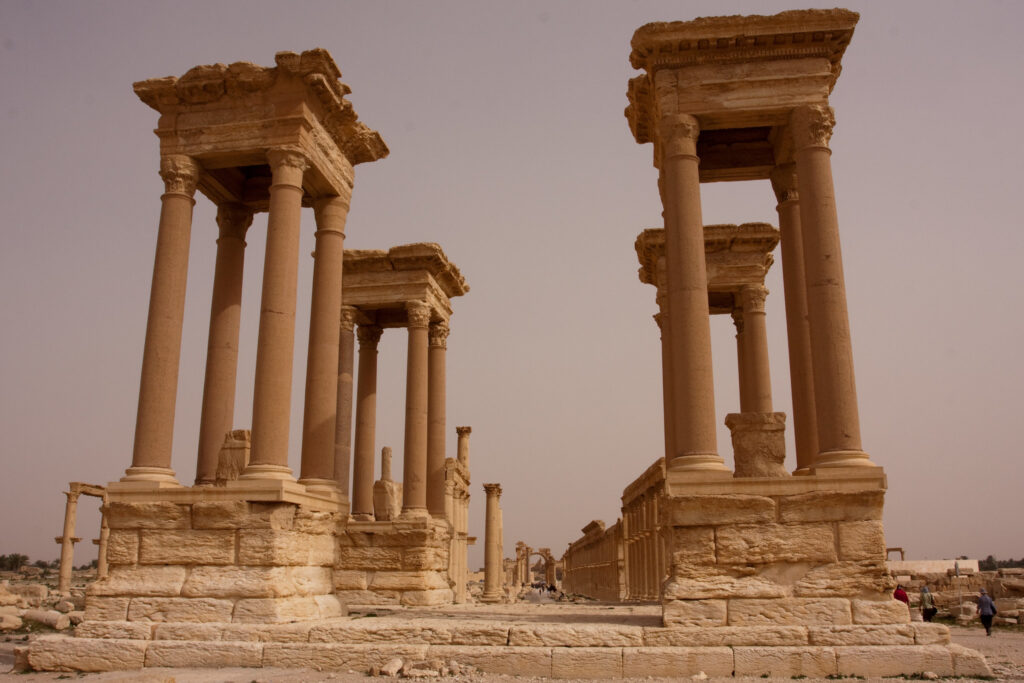
The Old City of Damascus was declared a UNESCO World Heritage Site in 1979. It covers an area of 135 hectares and is surrounded by a Roman wall, of which the north and east sides and part of the south side remain. Eight gates remain, the oldest of which, Bab Sharqi, dates from the Roman period. Although the city still preserves Roman and Byzantine remains, most of the 125 buildings and monuments included in the UNESCO declaration are Islamic.
2. Al Azem Palace, Damascus
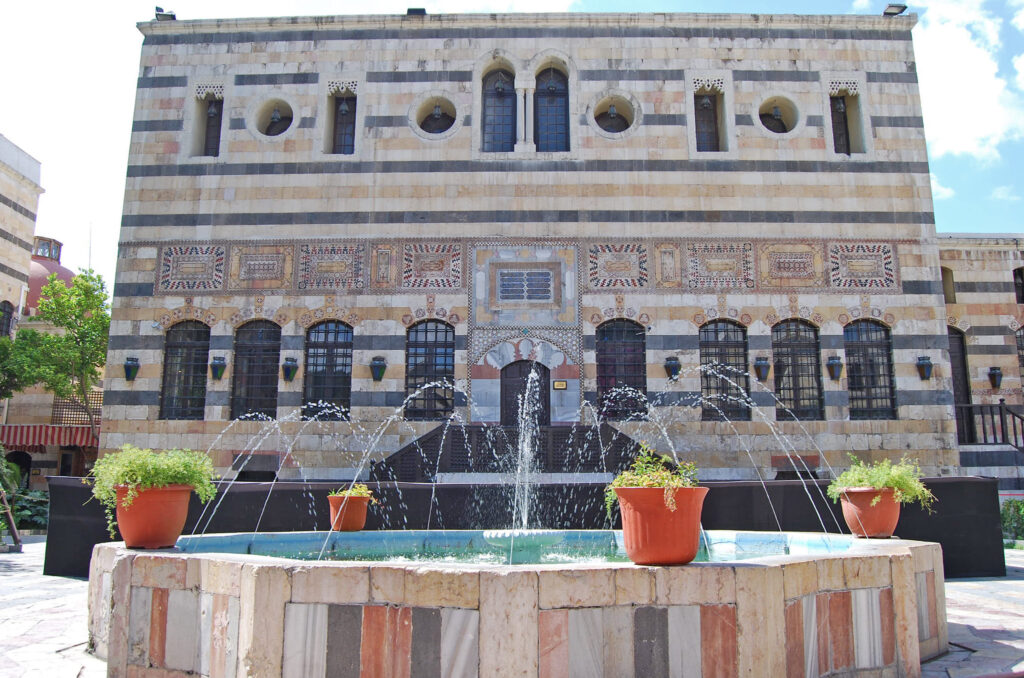
The Azem Palace is a palace that has been converted into a museum of folk traditions. The building is huge, and it is clear that the Azems had money. It was built relatively recently. It took 800 workers two years to build. All other work in the city was halted during that period and the water system was cut off until the palace’s plumbing was completed. In the palace each room, which has sixteen large halls, nineteen rooms on the ground floor, nine on the upper floor, three iwans, basement storage, a prayer area, stable and carriage parking, has been transformed into a museum room where objects are exhibited that are not initially related to the original function of the room in the building when it was constructed.
3. Krak des Chevaliers, Al-Husn
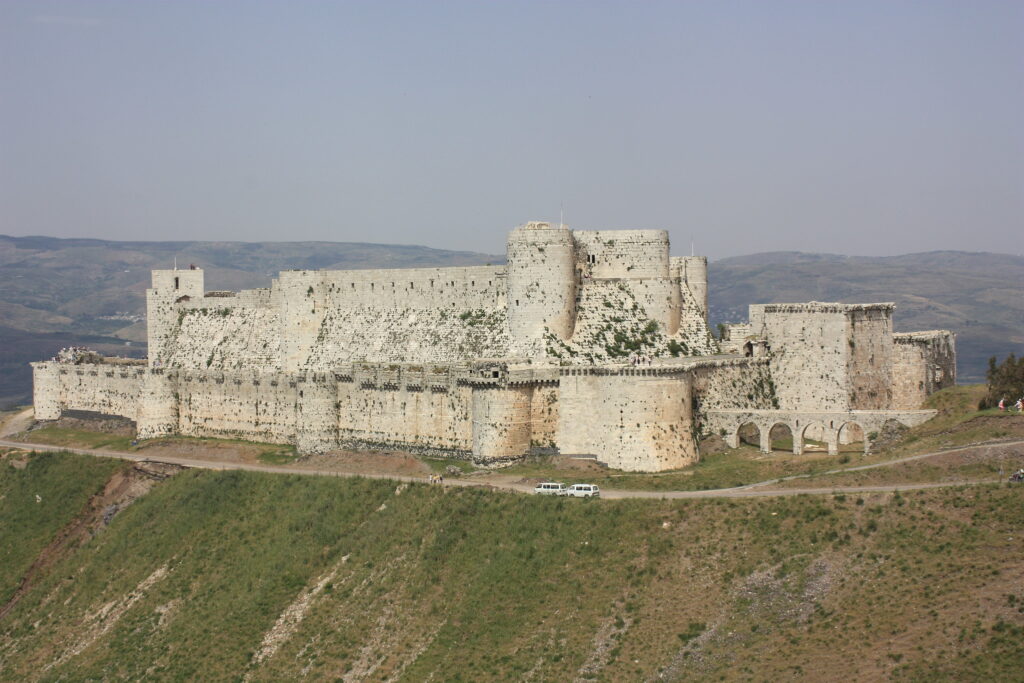
The mediaeval Crusader fortress Krak des Chevaliers is located approximately 40 kilometres west of the city of Homs in Syria, near the border with Lebanon. One of the best-preserved mediaeval castles in the world, it was included on the UNESCO World Heritage List. The Knights of St John controlled the castle between 1142 and 1271, when it was captured by the Mamluk Sultan Baibars. Today, there is a village called al-Husn around the castle with a population of about 9,000 people. Despite its predominantly military character, the fortress is one of the few places where Crusader art in the form of frescoes has survived.
4. Umayyad Mosque, Damascus
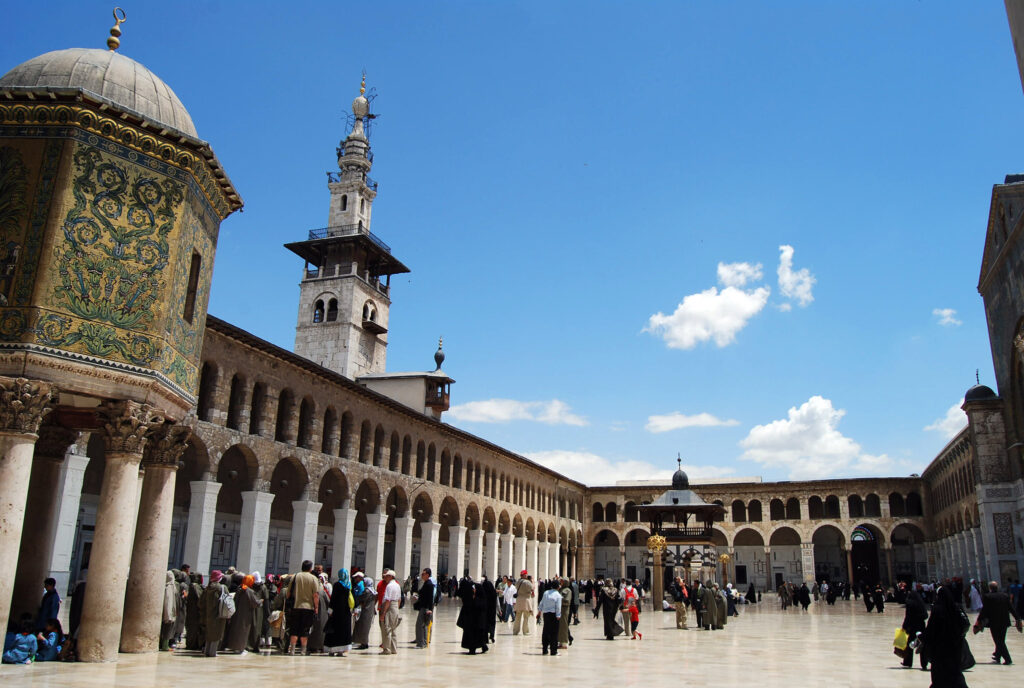
It is located in the centre of the city of Old Damascus. The original temple was known for its beauty and size, the largest temple in Roman Syria, dedicated to the god Jupiter. At the end of the 4th century, it became a Christian church and was associated with St John the Baptist. Today, the minaret is divided into two sections; the older and lower section is square and built from large blocks, the upper part made of sculpted stone. The minaret has 160 steps leading to the top. The building is one of the few mosques that have maintained their basic shape and architectural form since it was begun in the 8th century, becoming a model for other mosques throughout the Middle East.
5. Al-Hamidiyah Souq, Damascus
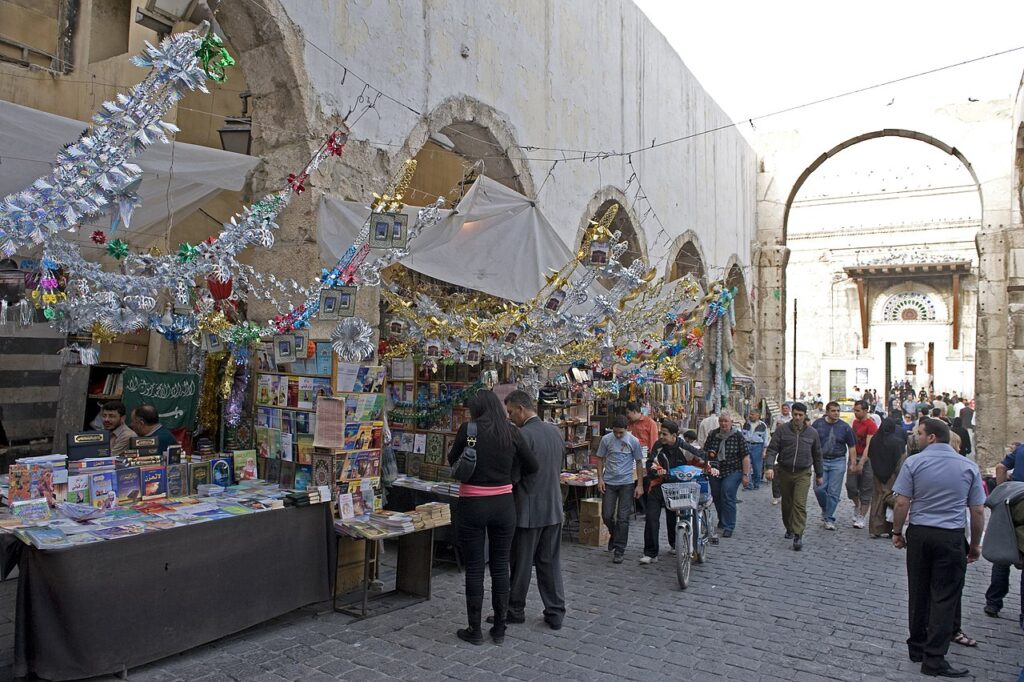
Al-Hamidiyah is the largest and most popular market in Damascus and is located right next to the Citadel. It ends at the gates of the Umayyad Mosque, at the entrance square, and is always crowded. It looks like the souk in Istanbul but is smaller. There is a main sector where the shops selling clothes, lots of women’s clothes, are crowded together, but there are also sectors dedicated to selling toys, kitchen utensils, classic Syrian souvenirs and perfumes. There are awnings to protect you from the summer heat and also an iron roof so the sun filters through them bathing everything with a very special light that makes the photos, always taken with respect, come out great.
6. The Aleppo Citadel, Aleppo
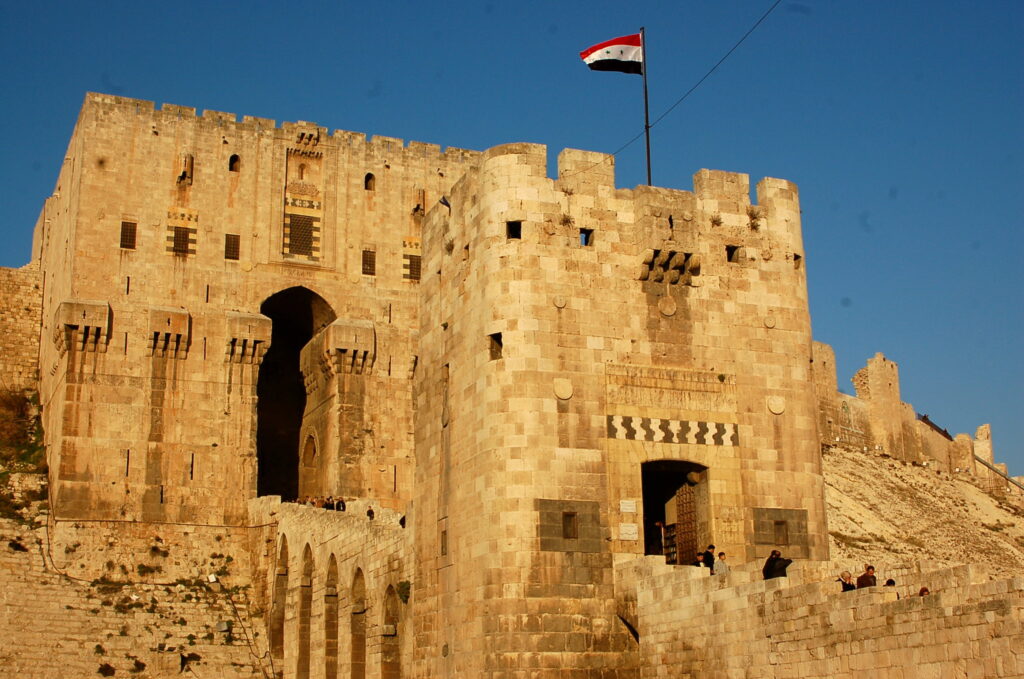
The Citadel of Aleppo Castle is a large mediaeval palace located in the centre of the old city of Aleppo. It was declared a UNESCO World Heritage Site in 1986. It was occupied by many civilisations including the Greeks, Byzantines, Mamluks and the Ayyubid dynasty. Much of the construction we see today is believed to date from the Ayyubid period. The fortified gate is accessible through an arched bridge that was an addition of the Mamluk government in the 16th century. Here you can see different magnificent spaces, such as the Serpentine Gate, Ayyubid Tower, Throne Hall, Al-Majd Palace or Palace of al-Zahir Ghazi, the Great Mosque, Abraham Mosque and the upper park where there are wells, such as the Saturah well (Ayyubid well) and the Hellenistic well, which penetrate the ground to a depth of 125m.
7. Palmyra, Homs Governorate
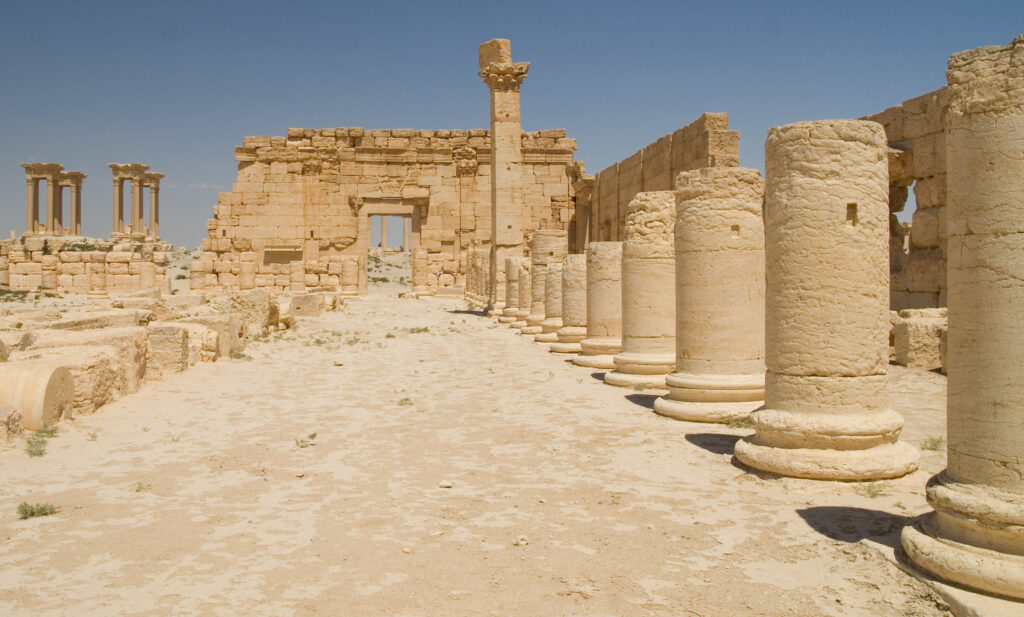
Palmyra was an ancient city located in the Syrian desert, in the present-day province of Hims, 3 km from the modern city of Tadmor or Tadmir, (Arabic version of the same Aramaic word “palmira”, which means “city of date trees”). Here is the Valley of the Tombs, which could well be considered one of the most curious cemeteries in the world thanks, above all, to the tower tombs, threatened by the violence of religious extremism. Today, only the extensive ruins remain, and they are the focus of much international tourist activity.
If you loved this article or found it useful, don’t forget to visit and subscribe to my social media for more useful content. Follow us on Google My Business, YouTube, Instagram, Pinterest, Twitter, Facebook or Reddit and subscribe to our receive our free website content.

